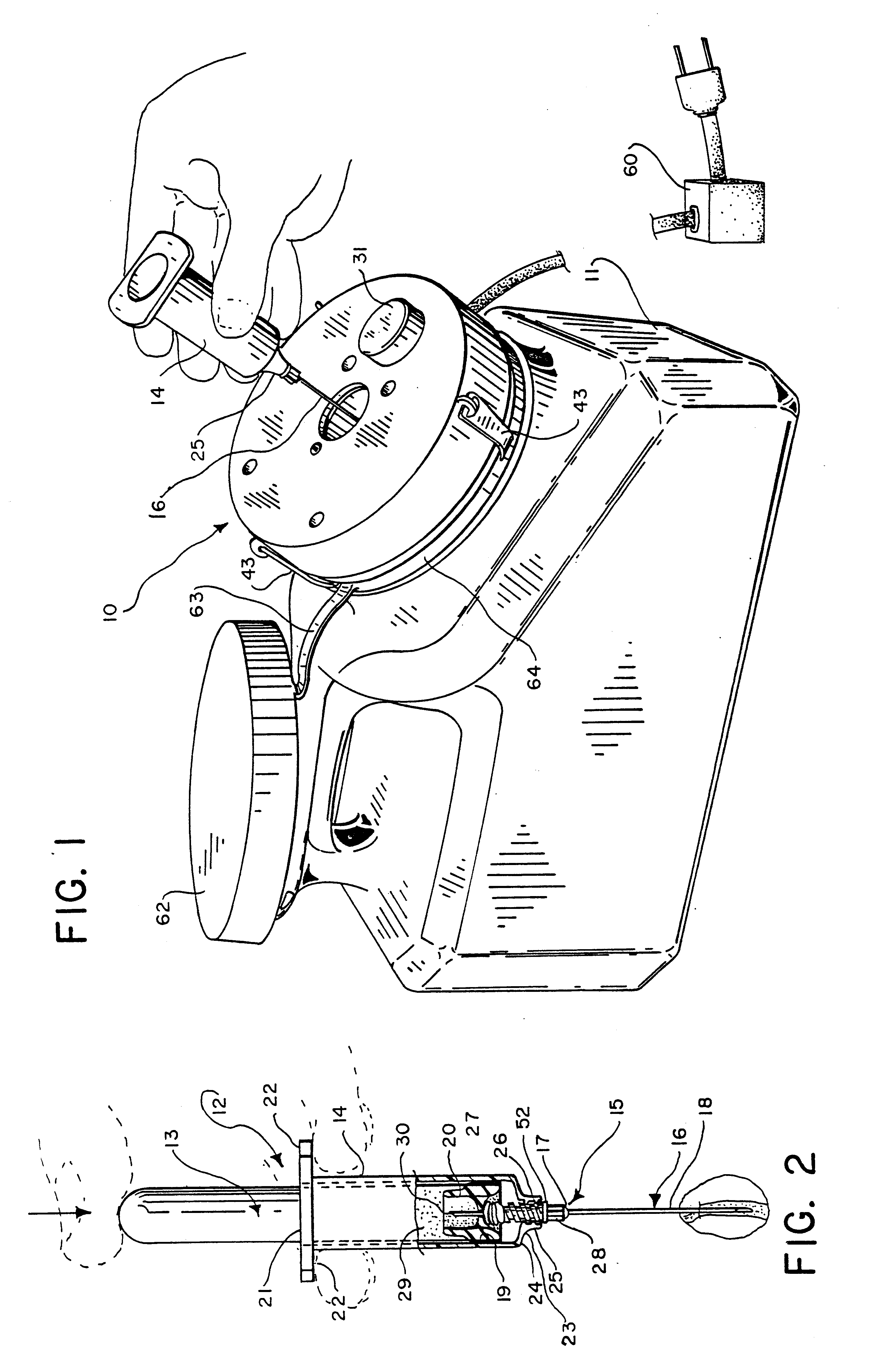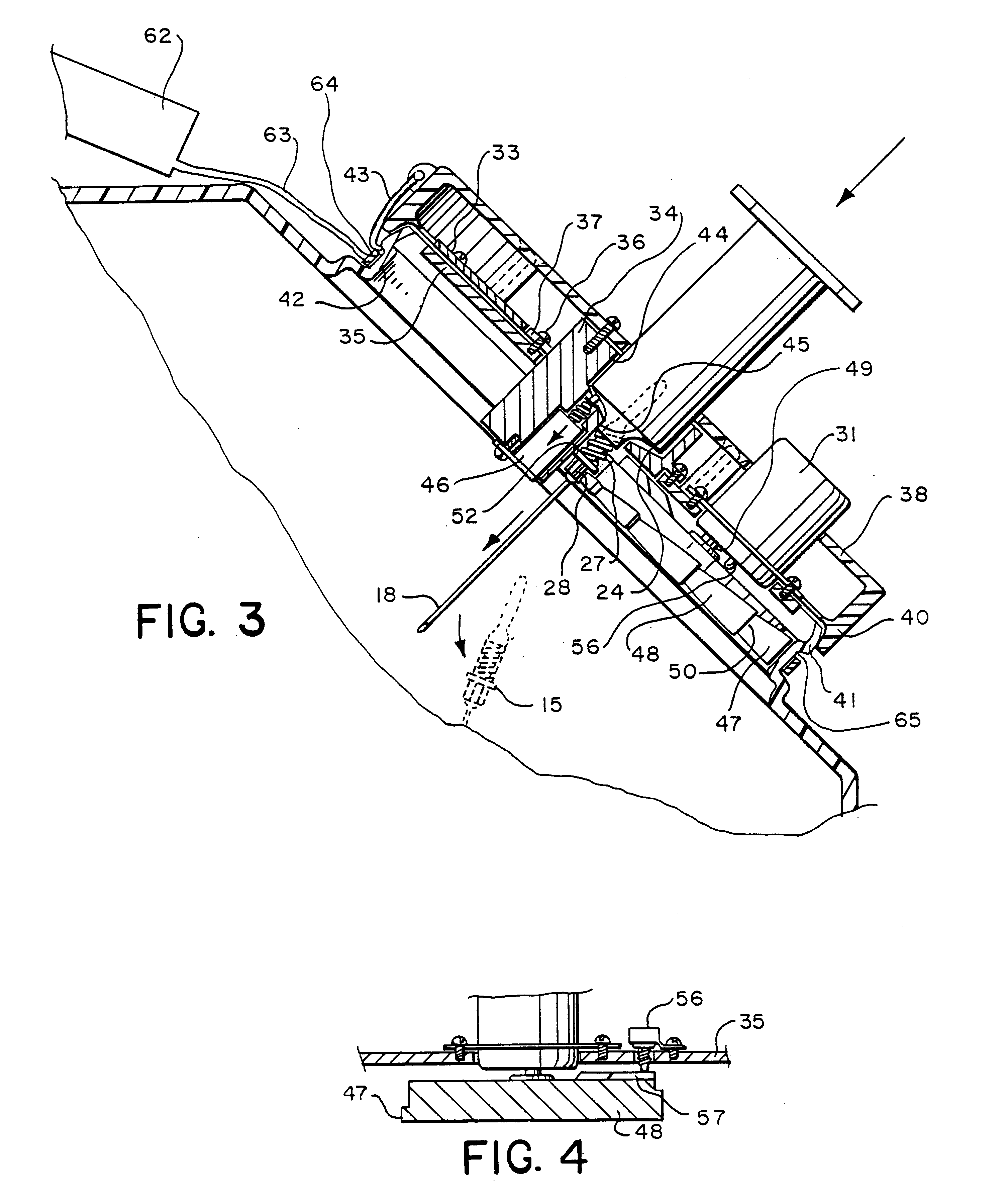Cooperative medical sampling and needle removal devices
a technology of medical sampling and needle removal, which is applied in the direction of packaging, transportation and packaging, rigid containers, etc., can solve the problems of destroying the plastic hub of the needle and parts of the syringe barrel, the device is very heavy, and the force required is large and potentially dangerous
- Summary
- Abstract
- Description
- Claims
- Application Information
AI Technical Summary
Benefits of technology
Problems solved by technology
Method used
Image
Examples
Embodiment Construction
In FIG. 1, needle remover 10 is secured in place of a lid upon a used-needle receptacle 11. An assembled vacuum container blood sampling device 12 is shown in FIG. 2. Sampler assembly 12 comprises an evacuated specimen container 13, a container sleeve 14, and a sampling needle assembly 15. Needle assembly 15 includes double-ended tubular cannula 16 secured within a central hub 17. Outside portion 18 of cannula 16 is indicated as inserted into a vein. The evacuated sample container 13 is closed at its open end 19 by an elastic seal 20, preserving the internal vacuum until time of use. Sleeve 14 has an open end 21 with a pair of graspable ears 22. Its opposite end 23 narrows through a shoulder 24 of a nipple 25 with internal threads 26. Threads 26 accept external threads 27 on hub 17. Hub 17 is typically provided with cruciform knurls 28, which are gripped to engage hub 17 to nipple 25.
To take a blood specimen 29, outside needle 18 is first inserted into the vein. Then, vacuum contain...
PUM
 Login to View More
Login to View More Abstract
Description
Claims
Application Information
 Login to View More
Login to View More - R&D
- Intellectual Property
- Life Sciences
- Materials
- Tech Scout
- Unparalleled Data Quality
- Higher Quality Content
- 60% Fewer Hallucinations
Browse by: Latest US Patents, China's latest patents, Technical Efficacy Thesaurus, Application Domain, Technology Topic, Popular Technical Reports.
© 2025 PatSnap. All rights reserved.Legal|Privacy policy|Modern Slavery Act Transparency Statement|Sitemap|About US| Contact US: help@patsnap.com



